Mercedes is still producing diesels, while at the same time spending enormous sums on electrification. Donal Byrne reviews the 7-seat electric family SUV and an old favourite.
The latest addition to the Mercedes electric range is the EQB, which continues a design concept originally conceived by Mercedes for its estate model to provide seven seats. It was hugely popular. The new EQB is designed to be the company's first fully practical family SUV with the same design philosophy.
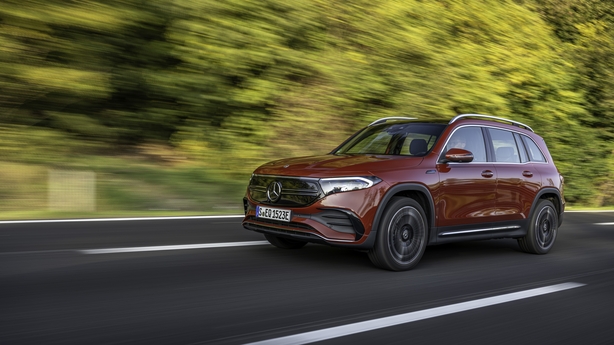
It has a strangely boxy shape to accommodate its seating configurations and, like all EV's, suffers a bit from the absence of a front grille - something redundant on electric cars. When I think of other electric cars like the Kia EV 6 and the Hyundai Ioniq, however, the design of the EQB seems conservative and a little flat in its styling impact, unlike some of Mercedes' other current offerings that have greater impact.
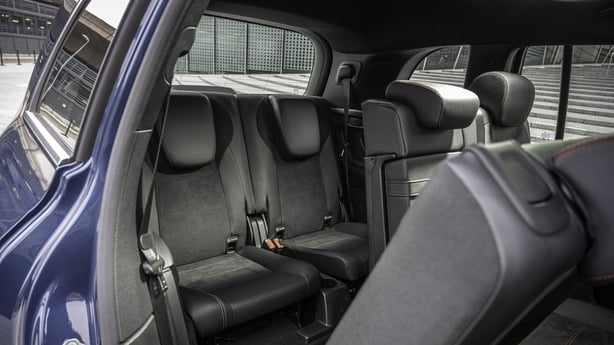
The seven-seat configuration has its own challenges. The front area of the car is spacious and the rear seat row can slide, but when you raise the last two seats from the boot area, the boot space is dramatically reduced. It is the irony of this full configuration - not just for Mercedes but for all manufacturers - that when you have a full complement of kids on board the kit and gear that will often accompany them will have to go on the floor or on their laps. And you can only get two very small people into those rear two seats. For the occasions when you do need those extra seats, however, the layout works well.
The range of the car is billed by Mercedes as 402 kilometres but as with all such claims, from all manufacturers in my experience, the real figure falls short as soon as you're not driving in ideal conditions - as testers do. Motorway driving, driving uphill, using things like the radio, air conditioning and wireless phone charging all use extra power. Outside temperature can also have a significant impact. I managed on average about 250 km on a full charge in mixed driving conditions, essentially meaning one motorway charge stop for a lengthy journey.
If you're lucky enough to have a home charger to carry the bulk of the charging, you won't have to endure the regular - and sometimes tortuous - challenges of our public charging network for EV's.
Limited fast chargers, charging units limited to one car on a fast charge at a time, software glitches, broken hardware, vehicles being parked at charging points when they shouldn’t be and people who hook their cars up and then disappear for hours are just some of the challenges. No matter how committed you are to electric, the challenges can be frustrating and very time consuming unless you have a home charger to do the bulk of the charging. Obviously none of these challenges pertain to a particular car brand - it doesn't matter what you're driving
All we can do is resign ourselves to the fact that this is a period of enormous transition, which will take probably several years, but that things are improving, however slowly. We all need to accept there’s only one way forward. The ultimate irony, of course, is that while car manufacturers are improving their EV's at a pace, the same cannot be said for the public charging network.
Like all EV’s, the car was at its best in urban driving situations and proved itself well capable of conserving power and battery capacity at low speeds. On one 10 km urban journey it was notably frugal on battery consumption, which is reassuring and welcome.
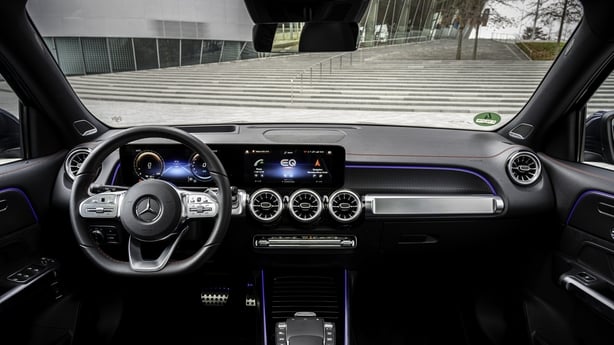
The EQB is designed internally in the same way as other Mercedes models and in the case of the EQB the screens are both 10 inches in size. The graphics on the screens are crisp but the sat nav system is notably short on suggested destination information - if your destination has the same name in different counties, for example, you'll find yourself scrolling with frustration.
The interior isn't just spacious, it's also very comfortable. It's designed to offer a feeling of luxury combined with tech that is
It's not easy to say goodbye to diesel. Its place in the world from this decade on is now beyond question, as the era of the conventional combustion engine fades more quickly than many people realise. The Mercedes CLS 2.2 diesel I drove last week has lots of new tech and advanced aids, but the fact that Mercedes has now committed over €60 billion to its electrification programme indicates that cars like the CLS - impressive though they are - are already seeing the moment of their greatness flicker.
The emissions issues that diesel and petrol vehicles contribute to our environmental crisis are not really up for debate - even if it is argued that newer diesels are cleaner than ever - and car companies have already accepted that they are being catapulted into a new age of electric vehicles. That’s it should be. Scientists remind us of the untold damage already caused by petrol and diesel around the globe and there is currently only one viable solution.
A different kind of competitive race is now underway to produce batteries that have longer ranges and zero emissions. As dates are already being decided as to when the last of the diesel and petrol engines will be produced, the final stage is in sight.
The CLS is among the most frugal cars I’ve ever driven - averaging around 5 litres of diesel per 100 km in mixed conditions - and has a range of well over 1,000 km. That range, frugality and freedom of movement are what I'll miss most about diesel cars like this.
The CLS is the original design that Mercedes arrived at almost 20 years ago - a luxury car with four doors and coupe styling. It was a pretty immediate hit and it wasn’t long before Audi came along with the A7. Even Volkswagen eventually produced the Arteon.
Apart from its current limited diesel appeal, it also comes with a very hefty price tag - €83,090, or €85,296 with full leather upholstery and metallic paint.
It comes in AMG guise, that is to say it has been engineered with a sporty emphasis. I actually prefer cars engineered more for comfort than the for the harsh response created by lower-profile tyres and a sport suspension set-up. The CLS, however, wasn’t overly rigid - just enough to generate a little too much feedback.
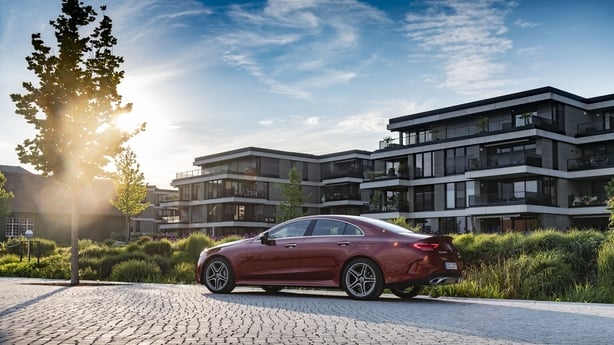
That sloping roofline does limit headroom and necessitates a narrow boot access area. The lower stance of the car does make entry and egress more of a challenge if you’re tall and also limits rear passenger space. The front seats are also a little on the performance design side.
The nine-speed gearbox and the punchy 2.2 diesel are perfectly matched and, overall, provide a very polished combination of acceleration and reserves of power. The diesel is also quieter than one would expect.
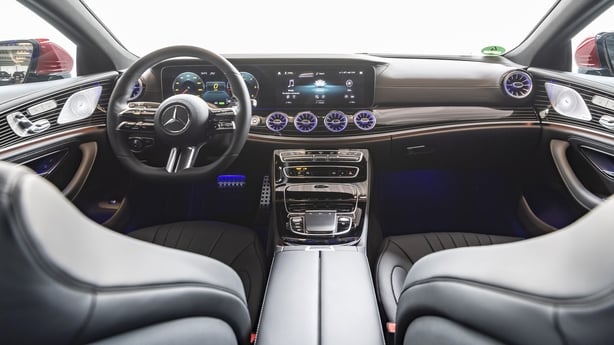
The interior is very impressive - two 12.3 inch screens for functions and information are complemented by two simple rotating switches on the steering wheel to control both functions and information displays. That makes for less distracting mode changes. However, the centre touch pad can be a little overs sensitive at times.
There's a feeling of generous space and a fair bit of luxury about the interior, even if some of the finishes are a tad faux for a luxury brand.
Both these cars are packed with advanced features - from active safety features to rear cameras and LED lighting. Right now though, only one has a long-term future.


